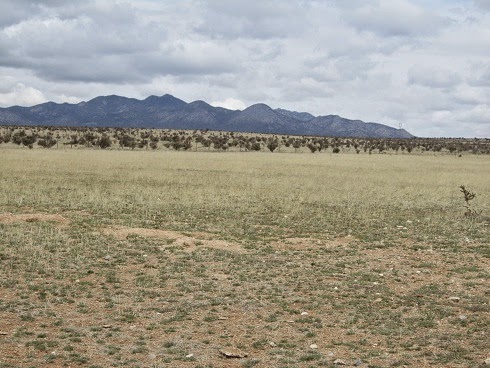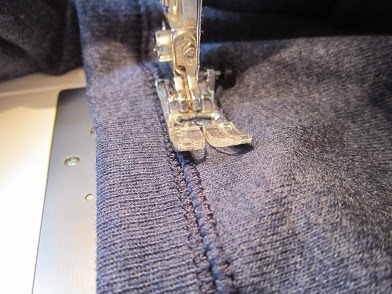I want to share how I wash wool. The picture above shows my husband Kerry shearing the sheep. He shears sheep all over the countryside around here, and even travels overnight to some larger flocks. He shears mainly small, backyard flocks for hand spinners like ourselves. AND, he uses hand shears, which is another story altogether.
So, on to wool washing. Once I have the wool fleece, the next step is to separate a small portion and "pick" it to remove as much vegetable matter as possible before washing. Depending on how dirty the fleece is, this can be quite a job.
I place the portion of fleece loosely into a mesh lingerie bag.
I use three buckets, lined up in my bathtub to wash the wool. I'll just say that there are many ways to wash wool. Everyone seems to have their favorite method. Some folks just use their washing machine. Some others have a kind of set up in the backyard. Using the bathtub to soak a whole fleece is another method I've heard of, but I don't want this very dirty water to go down the drain into the septic tank, so I use buckets and lift and carry them to pour outside. I fill two of the three buckets with water as hot as my water heater can deliver. The hotter the water the better to melt and remove the lanolin. Then I add a tablespoon of Dawn dish soap. Lower the soap into the water, but don't swish it. Just let it melt off the spoon and disperse into the water. Suds are harder to remove later in the rinse, so I don't make bubbles.
When the soap has melted into the water, I gently lower the bag into the bucket and leave the wool to soak. Set a kitchen timer for 20 minutes.
When the timer signals, lift the bag into the second bucket. If the wool is particularly dirty, this bucket is a second wash with just a bit more soap. Perhaps a half teaspoon, or so. If the wool isn't too dirty, this second bucket is the first rinse. You can tell how dirty the wool is by the color of the wash water. If the water is very brown, I do another wash. Because we live in a dry, windy place, I almost always have to wash twice, but maybe you won't have to. By the way, the reason I filled this bucket with water at the same time as the first bucket is because the water will cool at the same rate and be the same temperature as the first bucket. This can be important so that you don't "shock" the wool by changing the temperature of the water. If the water is significantly different, this difference in temperature may affect the way the lanolin acts and it may also cause some felting. I've not had trouble with this, but am careful still.
Sometimes I have to do a third wash. While waiting for this last wash soak, I refill the other two buckets for the rinse. I try to judge and adjust the temperature of the water so that it remains as constant as possible.
Just as the washing, I lift the bag from one rinse bucket to another and time twenty minutes for each soak. I always do at least two rinses. Sometimes I will put a half cup of vinegar into the last rinse.
After the final rinse, I lift the bag and let it drain until it isn't dripping. Then I take it outside and whirl the bag around my head to allow centrifugal force to remove as much water as can be. Stand well away from everyone you don't want to get wet!
Then I take the wool from the bag and fluff it out onto a towel. At this point I can see whether the wool is clean or if there is still lanolin clumped in it. A little lanolin doesn't bother me, as long as the dirt is gone and it feels and smells clean. The wool will always smell a little like lanolin and wet wool, but it should have a clean smell also. Let the clean wool dry in a protected place, away from the wind. My enclosed back porch is perfect since then I don't have to smell wet wool inside the house. If the wool still seems dirty, just let it dry and then repeat the wash process.
Once the wool is dry, I like to store it in a brown paper bag. This batch of wool was for Abigail's projects and it fit into a shoebox. Another cardboard box would work too. Many people store their wool in plastic totes or other containers. Paper grocery bags work well for me. Although I haven't had too much trouble with moths, I have a natural moth sachet recipe to help discourage them and try to regularly check the stored wool to make sure it isn't infested.
There are times when I wish I had a better system. It would be nice to wash more wool at one time, and I would rather not carry buckets through the house. But there are benefits to doing small batches as well, so I try to be content.

























































